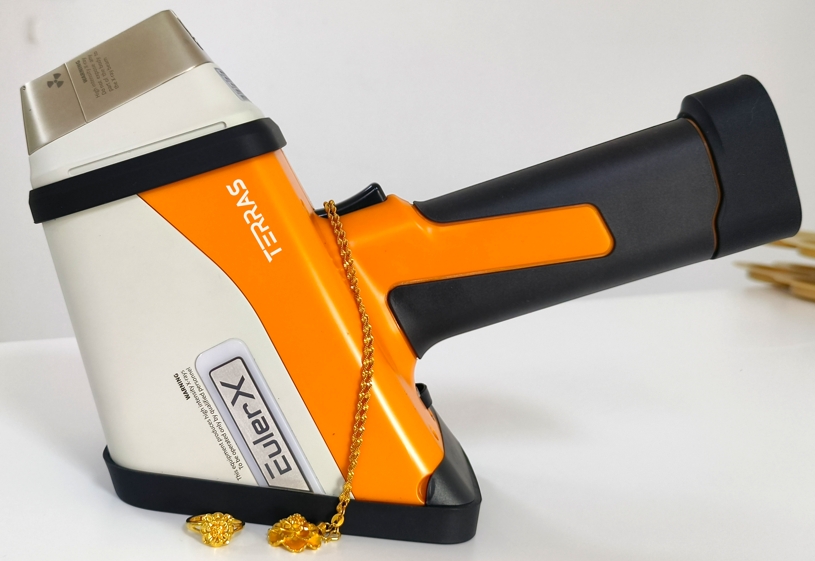
Gold and Jewelry
A high-tech enterprise focusing on the development and application of X-ray technology products, committed to becoming a leading supplier of X-ray industrial testing solutions.
How Accurate is an XRF Gun in Precious Metal Analysis? Insights into Its Capabilities
In recent years, X-ray fluorescence (XRF) guns have emerged as essential tools in the field of precious metal analysis. From jewelers and scrap metal dealers to mining professionals, XRF guns offer a quick and non-destructive way to assess the composition of materials, especially when it comes to gold, silver, platinum, and other precious metals. But how accurate is an XRF gun when it comes to precious metal analysis, and what should you know about its capabilities?
Understanding XRF Technology
Before diving into its accuracy, it’s important to understand how an XRF gun works. XRF technology involves using X-rays to bombard a sample, causing elements within the material to emit fluorescent X-rays. These emitted X-rays are then detected and analyzed, providing a detailed elemental composition of the sample. XRF guns are compact, portable devices, making them highly convenient for field use.
The ability to accurately identify and measure the concentrations of precious metals, such as gold, platinum, and silver, makes XRF an invaluable tool for businesses in the precious metals industry. However, like any analytical technique, XRF has its limitations and is influenced by various factors.

Terras EulerX990 Handheld Precious Metal Analyzer
The Accuracy of XRF Guns in Precious Metal Analysis
1. Sample Thickness and Surface Conditions
One of the primary factors that impact the accuracy of an XRF gun is the condition of the sample. The tool relies on the ability to penetrate the material and detect elemental composition, and this can be influenced by the thickness and surface roughness of the sample. For instance, highly polished or coated metals can sometimes provide less reliable readings, as the surface layer may affect the X-ray penetration depth.
Additionally, XRF guns perform better when the sample is relatively thin or exposed, as they require direct access to the material's surface. In thicker or non-homogeneous materials, the results may be skewed or less precise.
2. Calibration and Machine Quality
Another key factor is the calibration of the XRF gun and its overall quality. An XRF device that has been calibrated properly using known standards will yield more accurate results. The more sophisticated models typically provide higher accuracy, especially when they come with advanced features, such as improved sensors or software capable of handling more complex calculations.
For accurate precious metal analysis, it’s crucial that the device is regularly calibrated to ensure consistency and precision. Most high-quality XRF guns are calibrated to detect metals at very low concentrations and can give precise readings in parts per million (ppm), making them reliable for determining the exact metal content in an alloy.
3. Alloy Interference
XRF analysis can become less accurate when dealing with alloys, as different metals can interfere with the measurements of each other. This is especially true for precious metal alloys, which often contain varying amounts of base metals like copper or zinc. The presence of such metals may cause the XRF gun to misinterpret the results, leading to an inaccurate reading of the precious metal content.
However, modern XRF guns are increasingly able to account for these alloy interferences, providing better accuracy even in complex mixtures. With advanced calibration and analytical algorithms, newer XRF models are improving in their ability to distinguish between different metals in alloys and provide accurate readings.
4. External Factors: Environmental Conditions
Environmental conditions, such as temperature, humidity, and electromagnetic interference, can also affect the accuracy of XRF readings. In certain extreme conditions, the performance of an XRF gun may degrade, leading to inconsistent results. However, many high-quality XRF guns are built to withstand various environmental challenges, ensuring that they perform accurately in the majority of field situations.

Terras EulerX990 Handheld Precious Metal Analyzer
The EulerX 990 series is a top choice for precious metal analysis, offering rapid, precise results. Its advanced electronics and algorithms ensure high-quality measurements in seconds, perfect for non-destructive inspection of materials and products. The intuitive touch screen composition instantly, requiring minimal training and no sample preparation, regardless of shape or size.
Conclusion
XRF guns have revolutionized the way precious metals are analyzed, offering a rapid, accurate, and non-destructive alternative to traditional methods. While there are some limitations, particularly when dealing with alloys or very low concentrations, modern XRF guns continue to improve in accuracy and functionality. For most users in the precious metals industry, an XRF gun is an invaluable tool that provides a reliable and cost-effective way to determine metal composition with minimal hassle.
Join Us
Subscribe to our email list for updates & promotions.



